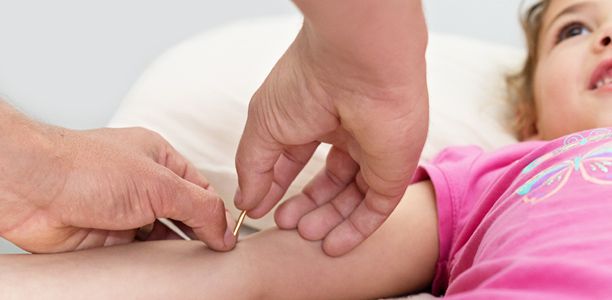It is upsetting to see anyone in pain, but it’s especially heartbreaking to watch a child endure chronic pain.
In addition to the suffering itself, chronic pain can cause traumatic effects on a child’s quality of life, and it can have significant physical, psychological and social consequences. Making matters worse, chronic pain greatly can affect the child’s parents or caregivers by causing feelings of helplessness and inadequacy.
Treating children with chronic pain can be complex, due to kids’ vulnerability while they’re growing and fear of causing long-term effects. Data about the safety and efficacy of therapeutic options for children is limited.
“Effective treatment of pain can be particularly difficult because it’s subjective; but with children, it is increasingly difficult because a child may not be able to communicate effectively depending on the age and accurate recognition of pain,” says Angela Johnson, MSTOM, MPH, practitioner of Chinese medicine in Rush’s Cancer Integrative Medicine Program.
Johnson led a recent study at Rush that found that acupuncture may be a safe and effective adjunctive integrative medicine treatment for chronic pain in pediatric patients. Results of the study were published in the December 2015 issue of Alternative and Complementary Therapies.
Acupuncture is a therapy that uses needles carefully inserted into the skin to stimulate specific points in the body. A safe technique when performed by a skilled provider, it is based on techniques that originated in East Asia more than 2,000 years ago and is used to treat a wide range of conditions.
“While acupuncture has been shown to reduce pain in adults, there is very little data on whether it’s effective in children.” Johnson says. “This study looked at the effect of acupuncture in children directly, rather than examining data collected from adults. This focus is especially important, since children experience pain in different ways than adults.”
Not stuck with pain
Chronic pain is pain that lasts weeks, months, or even years, and is estimated to affect 20 to 35% of children under age 18 worldwide. Conditions that can cause chronic pain in children include headaches, abdominal pain, back pain, musculoskeletal pain, scoliosis, leukaemia, sports injuries and Crohn’s disease.
The Rush study included 55 children and adolescents between age 7 and 20 who experienced chronic pain conditions. Each patient received up to eight individually tailored acupuncture treatments at Rush lasting 30 minutes.
All patients reported significant and progressive declines across all levels of pain throughout the eight-session treatment, with stronger pain reductions during early treatment. Participants also reported substantial pain reductions from the start to the end of each session. Additionally, patients reported significant reductions in health, emotional, social, and educational problems. These findings were corroborated by similar reductions in parent-reported observations of the same issues.
“Acupuncture provides an amazing alternative to chronic pain medication. This is especially true for patients who may have to cope with pain for most of their life, including those who have sickle cell anaemia and aftereffects of cancer. In addition, it helps with anxiety and depression,” says Paul Kent, MD, co-principal investigator of the study and paediatric oncologist at Rush.
“I’ve had patients completely weaned off all their pain medications when receiving acupuncture therapy,” Kent adds. “It also has benefited patients who struggle with chronic nausea.”
To measure self-reported intensity, location and quality of pain, the study used the Adolescent Pediatric Pain Tool, which assesses pain using the following criteria:
- A body outline diagram to identify pain areas.
- A pain-intensity score measured on a 10-centimeter line anchored by the words “no pain,” “little,” “medium,” “large” and “worst possible pain.”
- A number of pain-quality descriptors, yielding both a tallied score indicating number of words circled (circle scores), and tallied scores for sensory, affective, temporal and evaluative pain quality subscales. Higher circle scores indicate a greater subjective experience of pain, higher measurement scores indicate higher levels of pain intensity, and pain-quality descriptors (sensory, affective, temporal and evaluative) help describe the pain experience.
This study contributes to the sparse literature on the use of acupuncture in a paediatric population, and supports acupuncture’s feasibility as an effective strategy for managing chronic pain.
“The results of this study suggest that acupuncture can have a profound positive impact on the health and well-being of children who experience the disabling effects of chronic pain,” Johnson says. She hopes to expand her research to larger groups of children in order to understand more about how acupuncture can help relieve their chronic pain.
“Like any good doctors, we want to reduce children’s suffering,” she says, “and we hope that this study will be a first step in our being able to do more for these kids.”
(Source: Rush University Medical Center, Alternative and Complementary Therapies)



 (2 votes, average: 4.00 out of 5)
(2 votes, average: 4.00 out of 5) 






